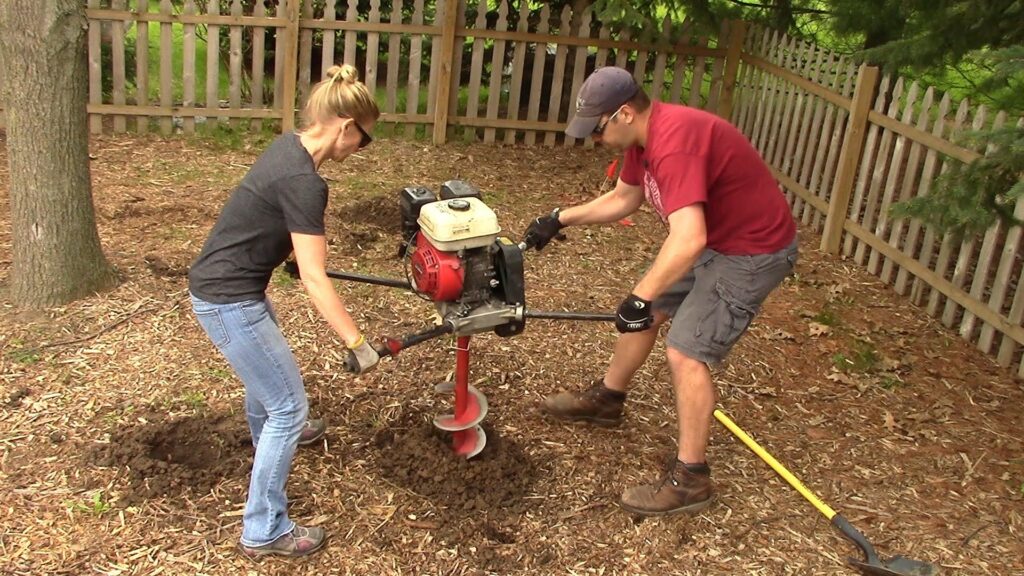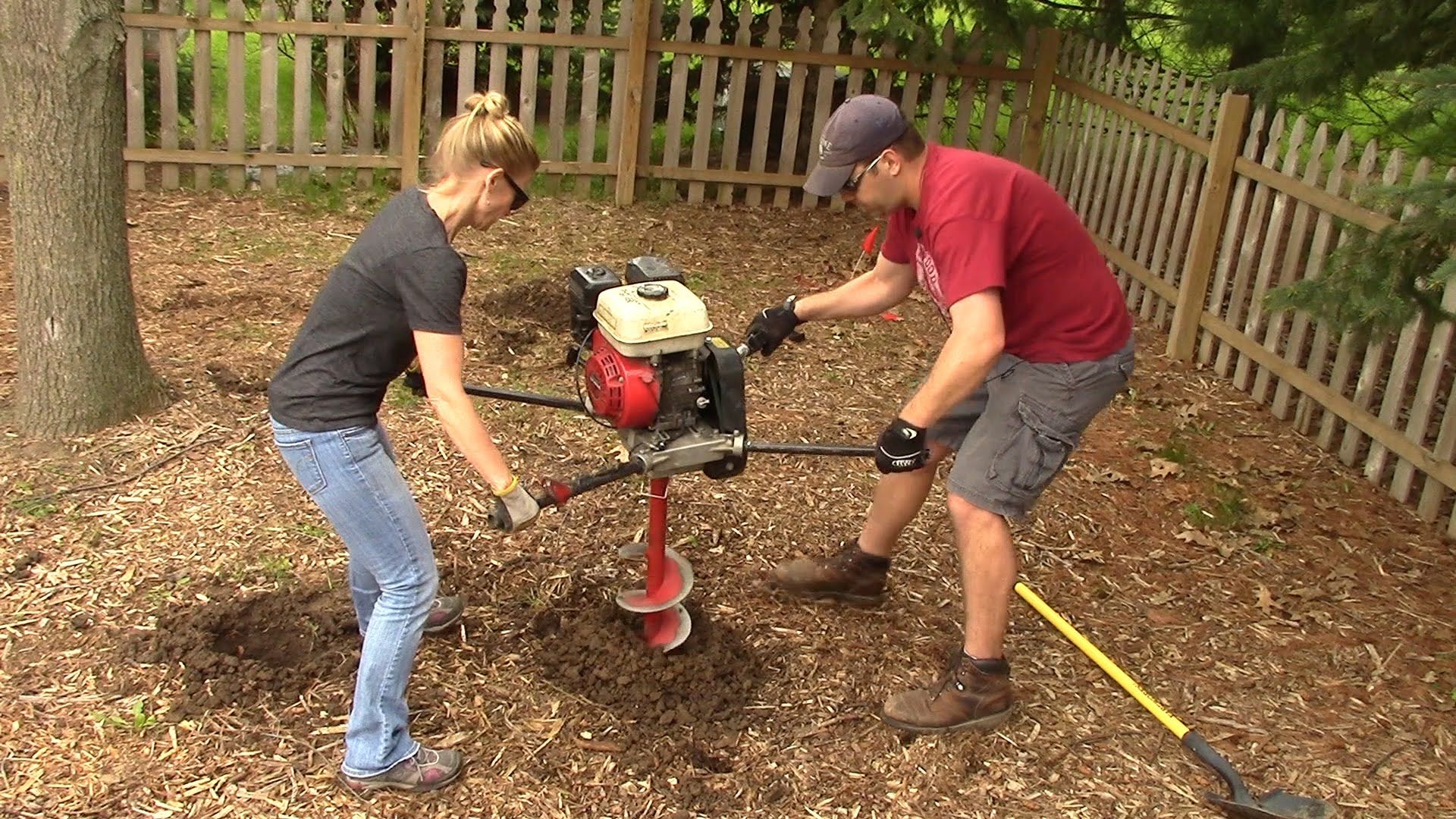
Choosing the Right Chain Link Fence Post Hole Digger: A Comprehensive Guide
Installing a chain link fence involves careful planning and the right tools. One of the most crucial tools for this project is a post hole digger. Selecting the appropriate chain link fence post hole digger can significantly impact the efficiency and quality of your fence installation. This comprehensive guide will explore the various types of post hole diggers, factors to consider when choosing one, and tips for using them effectively.
Understanding Different Types of Post Hole Diggers
Post hole diggers come in several varieties, each suited for different soil conditions and project scales. Understanding these differences is vital for choosing the right tool for your chain link fence project.
Manual Post Hole Diggers
Manual post hole diggers are the simplest and most affordable option. They consist of two blades hinged together with handles. The user pushes the blades into the ground, then pulls them apart to scoop out the soil. These are best suited for small projects and softer soil conditions.
- Pros: Affordable, lightweight, easy to store.
- Cons: Requires significant physical effort, not suitable for hard or rocky soil.
Auger Post Hole Diggers
Auger post hole diggers use a rotating drill bit to bore into the ground. They can be manual or powered (gasoline or electric). Manual augers are suitable for softer soils, while powered augers can handle harder conditions and larger projects. When installing a chain link fence, a powered auger will save significant time and effort.
- Pros: More efficient than manual diggers, can handle harder soil (powered versions).
- Cons: More expensive than manual diggers, powered versions require maintenance.
Hydraulic Post Hole Diggers
Hydraulic post hole diggers are typically mounted on tractors or skid steers. They offer the most power and efficiency, making them ideal for large-scale fencing projects or extremely tough soil conditions. These are commonly used by professionals installing chain link fences on commercial properties.
- Pros: High power and efficiency, suitable for large projects and tough soil.
- Cons: Expensive, requires specialized equipment.
Factors to Consider When Choosing a Post Hole Digger
Choosing the right chain link fence post hole digger depends on several factors. Consider these points to make an informed decision:
Soil Type
The type of soil you’re working with is a primary consideration. Soft, loamy soil is easier to dig through, while rocky or clay-heavy soil requires more powerful equipment. For rocky soil, a hydraulic or powered auger digger might be necessary. A manual post hole digger will likely be insufficient. If your soil contains many rocks, consider renting a rock auger. This specialized tool can significantly reduce the time and effort required to dig post holes for your chain link fence.
Project Size
The size of your chain link fence project will influence the type of digger you need. For a small residential fence, a manual or small powered auger might suffice. For larger projects, a hydraulic digger will save significant time and labor. Consider the number of post holes you need to dig and the time you have available.
Budget
Post hole diggers range in price from affordable manual options to expensive hydraulic models. Set a budget before you start shopping to narrow down your choices. Remember to factor in the cost of maintenance and fuel for powered diggers. Renting a hydraulic digger might be a cost-effective option for a one-time project.
Ease of Use
Consider your physical capabilities and experience level. Manual diggers require physical strength and stamina. Powered diggers require some mechanical knowledge and the ability to operate machinery safely. Choose a tool that you are comfortable and confident using. If you are not comfortable operating a powered auger, consider hiring a professional installer for your chain link fence.
Post Size
The diameter of the post holes needed for your chain link fence posts will determine the appropriate size of the digger. Ensure that the digger you choose can create holes of the required diameter. Using a digger that is too small will require you to enlarge the holes manually, while using a digger that is too large will waste time and effort.
Tips for Using a Post Hole Digger Effectively
Once you’ve chosen the right chain link fence post hole digger, follow these tips to use it effectively and safely:
Mark Hole Locations
Before you start digging, carefully mark the locations of each post hole. Use a measuring tape and stakes to ensure accurate spacing. Proper spacing is crucial for the stability and appearance of your chain link fence. [See also: Fence Post Spacing Guide]
Clear the Area
Remove any rocks, roots, or other debris from the area where you will be digging. This will make the digging process easier and prevent damage to the digger. Clear a wide enough area to allow you to maneuver the digger comfortably.
Dig in Stages
Digging in stages can make the process easier, especially in hard soil. Remove a small amount of soil at a time, then loosen the surrounding soil before digging deeper. This prevents the digger from getting stuck and reduces the strain on your body or the machine.
Use Water to Soften Soil
If you’re dealing with hard or dry soil, watering the area a day or two before digging can help to soften it. This will make the digging process easier and reduce the amount of effort required. Avoid overwatering, as this can create muddy conditions that are difficult to work with.
Wear Protective Gear
Always wear appropriate protective gear when using a post hole digger, including safety glasses, gloves, and sturdy boots. This will protect you from flying debris and prevent injuries. If you are using a powered digger, wear hearing protection as well.
Follow Manufacturer’s Instructions
Read and follow the manufacturer’s instructions for your specific post hole digger. This will ensure that you are using the tool safely and effectively. Improper use can damage the digger and increase the risk of injury. Understanding the mechanics of your chain link fence post hole digger and how to maintain it will allow it to function optimally over time.
Inspect the Hole
After digging each hole, inspect it to ensure that it is the correct depth and diameter. The depth of the hole will depend on the height of your fence and the type of soil. The diameter should be slightly larger than the diameter of the post to allow for concrete or other backfill material. Make sure the hole is straight and plumb. Any deviation from the proper angle can weaken the fence’s structural integrity.
Maintaining Your Post Hole Digger
Proper maintenance will extend the life of your chain link fence post hole digger and ensure that it performs optimally. Here are some tips for maintaining your digger:
Clean After Each Use
Remove any dirt, mud, or debris from the digger after each use. This will prevent corrosion and keep the moving parts functioning smoothly. Use a brush or hose to clean the digger thoroughly.
Lubricate Moving Parts
Lubricate the moving parts of the digger regularly to prevent friction and wear. Use a high-quality lubricant that is appropriate for the type of digger you have. Refer to the manufacturer’s instructions for specific lubrication recommendations.
Sharpen Blades or Bits
Sharpen the blades or bits of the digger as needed to maintain their cutting efficiency. Dull blades or bits will make the digging process more difficult and can damage the digger. Use a file or grinder to sharpen the blades or bits to the correct angle.
Store Properly
Store the digger in a dry, sheltered location to protect it from the elements. This will prevent corrosion and extend its lifespan. Store manual diggers in a shed or garage. Store powered diggers in a well-ventilated area and follow the manufacturer’s instructions for storing fuel.
Conclusion
Choosing the right chain link fence post hole digger is essential for a successful fence installation. Consider the soil type, project size, budget, and your own capabilities when making your decision. By following the tips outlined in this guide, you can choose a digger that will make the job easier, safer, and more efficient. Remember to prioritize safety and follow the manufacturer’s instructions when using any type of post hole digger. With the right tool and proper technique, you can install a durable and attractive chain link fence that will last for years to come. Choosing the right tool will save you time, energy, and potential injuries. Good luck with your chain link fence project!

